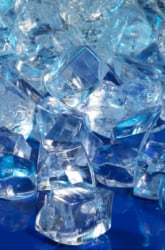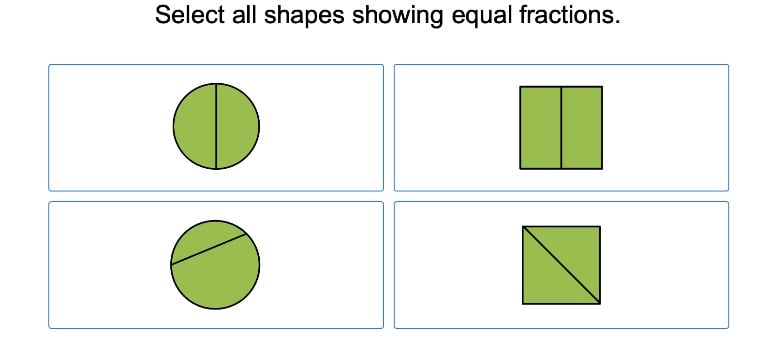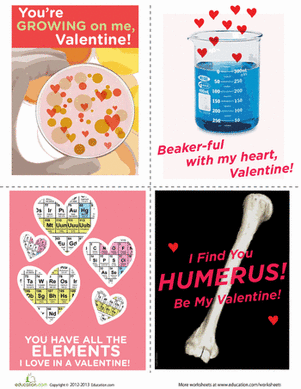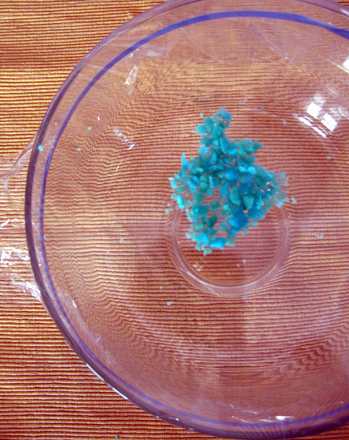Science project
Plastic Wrap Science Fair Project: Polymer Permeability
Moisture is tricky. It likes to escape out of tiny holes in a process called evaporation. Plastic wrap is supposed to keep food fresh in the fridge. If you have fruit you would like to save, you probably want it to stay moist instead of dehydrating, or drying out. When something dehydrates, moisture moves from the object to the air around it. Does plastic wrap actually prevent this process and keep food moist?
In this experiment, you’ll test different kinds of plastic wrap and see which, if any, holds in moisture.
Problem
What type of plastic wrap is best at keeping the moisture inside a container?
Materials
- Glad Wrap
- Handi-Wrap
- Saran Premium Wrap
- Mylar film
- Scissors
- 5 Identical cereal bowls
- Kitchen scale
- ½ cup measuring cup
- 2.5 cups of water
- Masking tape
- Marker
- Notebook
- Pencil
Procedure
- Get your cereal bowls ready by labeling them with masking tape. Label one “no wrap,” one “Glad,” one “Handi,” one “mylar lid,” one “mylar tape,” and one “Saran”.
- Place half a cup of water in each bowl.
- Cut squares of each plastic wrap large enough to wrap over the top of the bowl.
- Tape each wrap around the bowl so that they’re all sealed. Leave the “no wrap” bowl without any kind of wrap.
- Use your kitchen scale to weigh each bowl, and note the results in your notebook.
- Now, put each bowl on the counter for a week. After a week, carefully weigh each bowl again.
- Compare the results to the original weight, and divide the current weight by the original weight. Are they different?
Results
Each bowl will lose moisture. The uncovered bowl will lose moisture faster than the others. Your results with the plastic wrap will vary. The taped mylar is less permeable, but its overall permeability will depend on how well you taped it!
Why?
Remember the last time you brought home a helium balloon? It was a lovely sight sitting at the top of your room, until it gradually sank down to the floor. Why did it go flat? Gradually, the helium snuck through the pores in the plastic balloon and escaped into the rest of the room, so the balloon couldn't float anymore.
Different plastic wraps are made of different polymers, chains of molecules that have come together in a chemical reaction. These different polymers have different levels of permeability. Permeability is the ability to exchange a gas or a vapor through a solid surface. Even though the plastic looks solid, it still allows water molecules to pass through and evaporate.
Many plastic wraps used to be made out of polyvinylidene chloride, or PVdC. This plastic is less permeable than many plastic polymers and it clings well to other materials, forming a tight seal. However, due to concerns about the environmental impacts of the chloride and the health impacts of the phthalates used in this synthetic polymer, many companies have changed to low-density polyethylene (LDPE). LDPE is more permeable than PVdC. All of the brands you tried in this experiment are currently made of polyethylene plastics. These plastics are actually some of the most permeable polymers around! Mylar is made out of polyethylene terephthalate, often abbreviated as PET. This is a less permeable plastic, but as you could see, but doesn't cling like the other plastic wraps you used.
There are many factors that influence the way plastic wrap might keep something fresh. The thickness of the wrap will also change its permeability, and if two plastic wraps are made of the same polymer, the thicker wrap will be less permeable. The ability of a piece of wrap to cling tight can also help keep food from dehydrating, because moisture can move much more easily through cracks than it can through a solid surface.
Going Further
How well do other containers such as Ziploc bags, glass jars, or reusable food containers with lids keep food fresh and moist? Can you design an experiment to compare these with plastic wrap?
Education.com provides the Science Fair Project Ideas for informational purposes only. Education.com does not make any guarantee or representation regarding the Science Fair Project Ideas and is not responsible or liable for any loss or damage, directly or indirectly, caused by your use of such information. By accessing the Science Fair Project Ideas, you waive and renounce any claims against Education.com that arise thereof. In addition, your access to Education.com's website and Science Fair Project Ideas is covered by Education.com's Privacy Policy and site Terms of Use, which include limitations on Education.com's liability.
Warning is hereby given that not all Project Ideas are appropriate for all individuals or in all circumstances. Implementation of any Science Project Idea should be undertaken only in appropriate settings and with appropriate parental or other supervision. Reading and following the safety precautions of all materials used in a project is the sole responsibility of each individual. For further information, consult your state's handbook of Science Safety.












